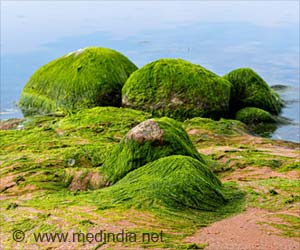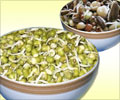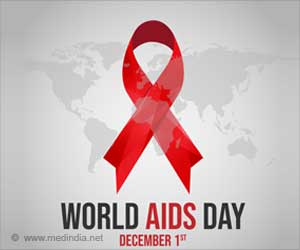Algae could be the food of the future due to its sustainable cultivation and nutrient-rich profile.
- Climate change and overpopulation may have caused a food crisis
- Algae are rich in protein, vitamins, and minerals
- The lack of land coupled with its abundance of nutrients may make algae the superfood of the future
Need for Sustainable Food Alternatives
By 2050, urbanization, degraded soil, and climate change might result in a loss of up to 250 million acres of land used for crop production, according to the Food and Agriculture Organization of the United Nations (1✔ ✔Trusted SourceFood and agriculture projections to 2050
Go to source). In addition to this, other factors like climate change, maintenance costs, and access to water are causing problems with raising livestock.
People need food to survive, so finding alternative food options that are more sustainable and nutritious is the need of the hour. Some experts believe algae might be the answer (2✔ ✔Trusted Source
Algae as nutritional and functional food sources: revisiting our understanding
Go to source).
Hype Around Algae
Algae are naturally occurring water-based, simple photosynthetic organisms. They grow in all types of natural bodies of water, including fresh and saltwater.Like all plants, algae live by using photosynthesis to create their own nutrients and add oxygen to the air and water around them. Unlike other aquatic plants, algae do not have any leaves, roots, or stems.
Algae can range in size from extremely small microalgae to large colonies of seaweed. It is a diverse group that includes blue-green, green, red, and brown algae (3✔ ✔Trusted Source
Microalgae: Bioactive Composition, Health Benefits, Safety and Prospects as Potential High-Value Ingredients for the Functional Food Industry
Go to source).
Earlier research has shown that different varieties of algae have potential medicinal benefits. A study found that red marine algae could help treat fatty liver disease. Another study suggests that taking spirulina, which is a type of blue-green algae, can help decrease blood pressure.
Nutritional Profile of Algae
A recent study believes algae to be a superfood. This can be attributed to the high content of protein, essential fatty acids, minerals, and vitamins present in algae.Since algae don’t have stems, roots, or branches to hold themselves up, they dedicate all of their energy to making more protein, and fatty acids, rather than cellulose.
There are thousands of species of algae and each one produces a lot of healthy nutrients we all need, which most of us are not having enough of. Algae are a rich source of vitamin B, vitamin K, iron, magnesium, calcium, and iodine.
The main cause of illness is oxidation, which causes wear and tear on the body. Algae are rich in antioxidants. Many different microalgae species are rich sources of different antioxidants.
Only a small percentage of algae species have been consumed by humans, but those are well known for their nutrient density and quality.
Furthermore, algae provide a source of vegetarian-friendly omega-3 fatty acids, such as docosahexaenoic acid (DHA) (4✔ ✔Trusted Source
Health benefits of docosahexaenoic acid and its bioavailability: A review
Go to source).
Funnily enough, fish are regarded to be a rich source of omega-3 in the human diet, but they do not produce omega-3s on their own but rather consume them from algae and plankton. DHA from algae oil is as bioavailable as DHA from cooked salmon (5✔ ✔Trusted Source
Algal-oil capsules and cooked salmon: nutritionally equivalent sources of docosahexaenoic acid
Go to source).
Is Algae sustainable?
According to experts, there is a need to look for alternative protein sources as the world needs more protein right now. Due to the lack of land, protein-rich plants like soybean and legumes cannot be grown.Algae can be grown on non-arable land using non-potable water and it produces protein at up to 20 times the amount as soybean, which is currently regarded as the protein-producing champion.
The forces of climate change, combined with a growing population, are putting extreme strain on our current agricultural system.
Algae can sequester CO2, which increases its long-term sustainability in the food industry. As long as the algae are grown in clean waters, it is a highly nutritious food with little environmental impact.
Another advantage is that the environment in which algae grows can be controlled without the use of herbicides, pesticides, or other toxic substances, which is beneficial to human health and food production. Microalgae have the potential to be sustainable chiefly because they can be cultivated in smaller areas and still produce a significant amount of food.
References:
- Food and agriculture projections to 2050 - (https://www.fao.org/global-perspectives-studies/food-agriculture-projections-to-2050/en/)
- Algae as nutritional and functional food sources: revisiting our understanding - (https://pubmed.ncbi.nlm.nih.gov/28458464/)
- Microalgae: Bioactive Composition, Health Benefits, Safety and Prospects as Potential High-Value Ingredients for the Functional Food Industry - (https://pubmed.ncbi.nlm.nih.gov/35741941/)
- Health benefits of docosahexaenoic acid and its bioavailability: A review- (https://pubmed.ncbi.nlm.nih.gov/34532031/)
- Algal-oil capsules and cooked salmon: nutritionally equivalent sources of docosahexaenoic acid - (https://pubmed.ncbi.nlm.nih.gov/18589030/)
Source-Medindia
















